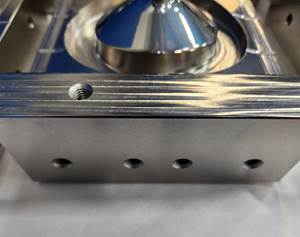The backlash from a study done by an environmental group that found traces of hexavalent chromium in the water supplies of 31 U.S. cities was swift and staggering, but not from where most people expected.
Environmental Working Group, a Washington, D.C.-based non-profit group that in recent years has taken on nail polish, hairspray and playgrounds as health risks among others, released a December study that showed traces of chromium 6 in water supplies. It claimed the five cities with the highest levels of chromium 6 were Norman, OK.; Honolulu, HI; Riverside, CA.; Madison, WI.; and San Jose, CA.
While several U.S. Senators called on EPA Administrator Lisa Jackson to take action, several researchers and health experts called into question the EWG’s study, and more importantly, the group’s motives.
“A bogus public health study,” is what Jeff Stier, a senior fellow at the National Center for Public Policy Research, and Henry Miller, a physician, molecular biologist and a fellow at Stanford University’s Hoover Institution called the report in an op-ed piece in the San Jose Mercury News titled “Don’t buy into the chromium 6 hysteria.”
“Americans want and deserve safe drinking water,” Stier and Miller wrote. “But we can achieve that without irresponsible activists pushing for unreasonable standards based on distorted science -- and politicians and regulators pandering to them.”
Said Ken August of the California Department of Public Health: “The data are problematic at best.”
State health officials in Hawaii also called into question the study, saying the water sample taken showed only natural levels of chromium 6 found in the soil. Acting Deputy Health Director for the Environment Gary Gill told a state Senate committee that the levels detected were “within the range of naturally occurring background levels.”
Ann Mason of the American Chemistry Council says: “It has been well-known for years that low levels of hexavalent chromium exist naturally in groundwater in certain geological formations.”
In Norman, OK, a hydrogeologist who works as director of water resources for the Association of Central Oklahoma governments, questioned the EWG study, saying it lacked peer review, made questionable claims and had faulty water sample collection practices.
“For a science report, this reads a little bit like the National Enquirer,” John Harrington told the Norman Transcript newspaper. “I don’t think this thing has been peer reviewed. I don’t think it’s ready for prime time.”
According to the EWG report. Norman’s water sample tested at 12.9 parts per billion compared with a low of 0.03 for Cincinnati and 0.20 for Los Angeles.
“That is a phenomenally small thing. That’s like a dropper of something in an Olympic sized swimming pool,” Harrington says.
Maybe even smaller. A reporter for the Stockton (CA) Record newspaper consulted several scientists and asked what the proposed regulations for California of 0.02 ppb would entail. The answer: 20 drops of chromium mixed in with enough clean water to fill a string of railroad tank cars 10 miles long.
Still, those discrepancies with the EWG report didn’t bother the EPA’s Jackson, who after meeting with 10 U.S. Senators announced that her agency will likely revise drinking water standards for chromium 6 in 2011.
“EPA has already been working to review and incorporate the ground-breaking science referenced in this report,” Jackson says. “However, as a mother and the head of EPA, I am still concerned about the prevalence of chromium 6 in our drinking water.”
But Stier and Miller point out that the issue with chromium 6 is inhaling the vapors, and not drinking it in water diluted by the billions.
“The route of exposure is a critical risk factor in toxicology,” they say. “For example, drinking a glass of wine is healthful, but pouring it into your lungs can cause pneumonia.”



















